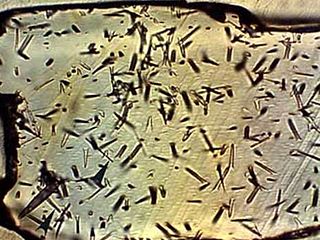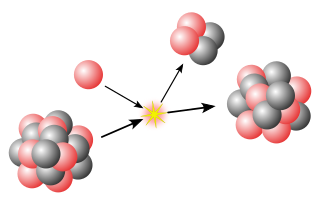 W
WFission track dating is a radiometric dating technique based on analyses of the damage trails, or tracks, left by fission fragments in certain uranium-bearing minerals and glasses. Fission-track dating is a relatively simple method of radiometric dating that has made a significant impact on understanding the thermal history of continental crust, the timing of volcanic events, and the source and age of different archeological artifacts. The method involves using the number of fission events produced from the spontaneous decay of uranium-238 in common accessory minerals to date the time of rock cooling below closure temperature. Fission tracks are sensitive to heat, and therefore the technique is useful at unraveling the thermal evolution of rocks and minerals. Most current research using fission tracks is aimed at: a) understanding the evolution of mountain belts; b) determining the source or provenance of sediments; c) studying the thermal evolution of basins; d) determining the age of poorly dated strata; and e) dating and provenance determination of archeological artifacts.
 W
WGeochronology is the science of determining the age of rocks, fossils, and sediments using signatures inherent in the rocks themselves. Absolute geochronology can be accomplished through radioactive isotopes, whereas relative geochronology is provided by tools such as palaeomagnetism and stable isotope ratios. By combining multiple geochronological indicators the precision of the recovered age can be improved.
 W
WIsochron dating is a common technique of radiometric dating and is applied to date certain events, such as crystallization, metamorphism, shock events, and differentiation of precursor melts, in the history of rocks. Isochron dating can be further separated into mineral isochron dating and whole rock isochron dating; both techniques are applied frequently to date terrestrial and also extraterrestrial rocks (meteorites). The advantage of isochron dating as compared to simple radiometric dating techniques is that no assumptions are needed about the initial amount of the daughter nuclide in the radioactive decay sequence. Indeed, the initial amount of the daughter product can be determined using isochron dating. This technique can be applied if the daughter element has at least one stable isotope other than the daughter isotope into which the parent nuclide decays.
 W
WLutetium–hafnium dating is a geochronological dating method utilizing the radioactive decay system of lutetium–176 to hafnium–176. With a commonly accepted half-life of 37.1 billion years, the long-living Lu–Hf decay pair survives through geological time scales, thus is useful in geological studies. Due to chemical properties of the two elements, namely their valences and ionic radii, Lu is usually found in trace amount in rare-earth element loving minerals, such as garnet and phosphates, while Hf is usually found in trace amount in zirconium-rich minerals, such as zircon, baddeleyite and zirkelite.
 W
WThe oldest dated rocks formed on Earth, as an aggregate of minerals that have not been subsequently broken down by erosion or melted, are more than 4 billion years old, formed during the Hadean Eon of Earth's geological history. Meteorites that were formed in other planetary systems can pre-date Earth. Particles from the Murchison meteorite were dated in January 2020 to be 7 billion years old.
 W
WA pleochroic halo, or radiohalo, is a microscopic, spherical shell of discolouration (pleochroism) within minerals such as biotite that occurs in granite and other igneous rocks. The halo is a zone of radiation damage caused by the inclusion of minute radioactive crystals within the host crystal structure. The inclusions are typically zircon, apatite, or titanite which can accommodate uranium or thorium within their crystal structures. One explanation is that the discolouration is caused by alpha particles emitted by the nuclei; the radius of the concentric shells are proportional to the particles' energy.
 W
WIn geochemistry, geophysics and nuclear physics, primordial nuclides, also known as primordial isotopes, are nuclides found on Earth that have existed in their current form since before Earth was formed. Primordial nuclides were present in the interstellar medium from which the solar system was formed, and were formed in, or after, the Big Bang, by nucleosynthesis in stars and supernovae followed by mass ejection, by cosmic ray spallation, and potentially from other processes. They are the stable nuclides plus the long-lived fraction of radionuclides surviving in the primordial solar nebula through planet accretion until the present; 286 such nuclides are known.
 W
WThermochronology is the study of the thermal evolution of a region of a planet. Thermochronologists use radiometric dating along with the closure temperatures that represent the temperature of the mineral being studied at the time given by the date recorded to understand the thermal history of a specific rock, mineral, or geologic unit. It is a subfield within geology, and is closely associated with geochronology.